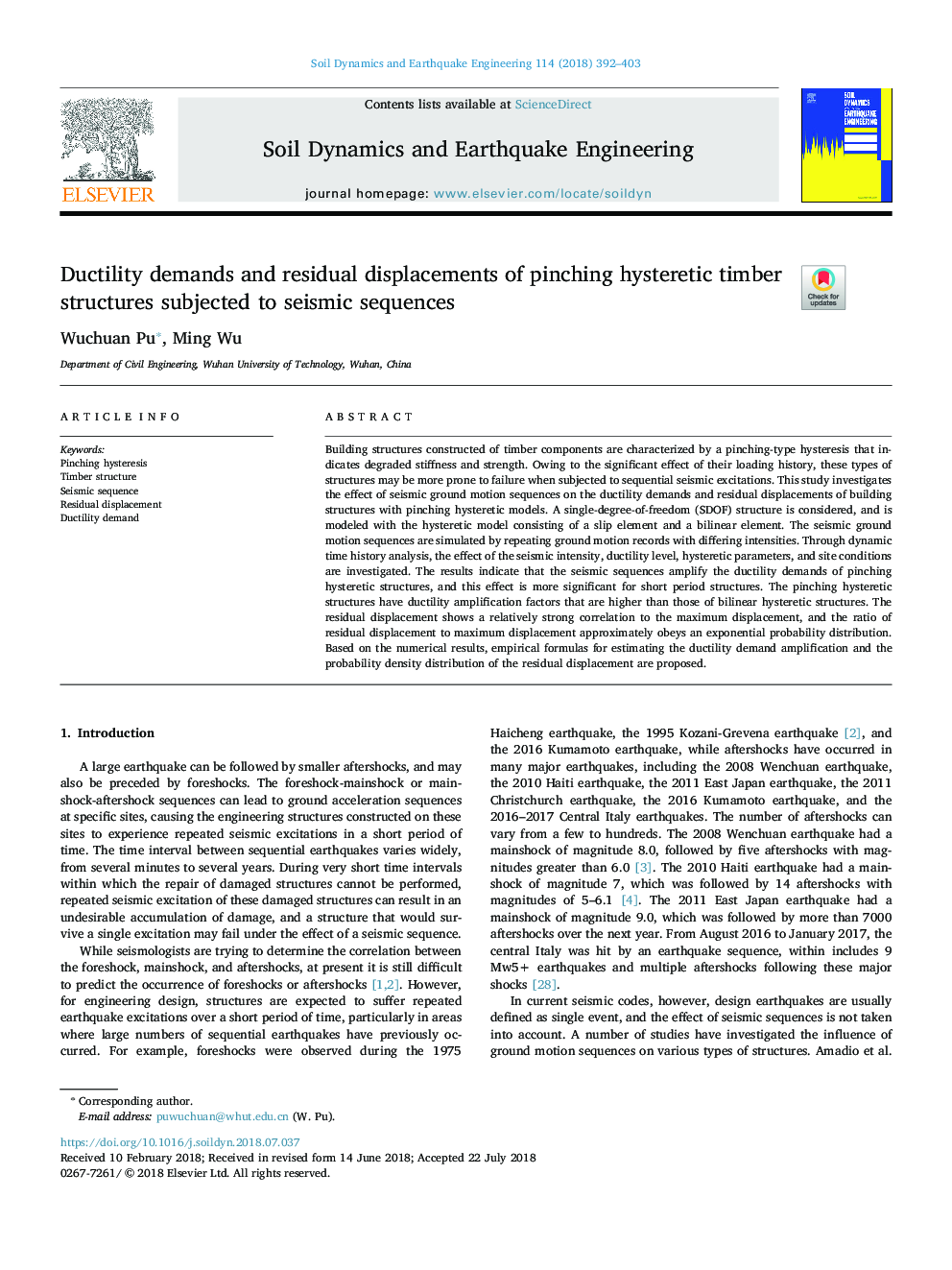| Article ID | Journal | Published Year | Pages | File Type |
|---|---|---|---|---|
| 6769602 | Soil Dynamics and Earthquake Engineering | 2018 | 12 Pages |
Abstract
Building structures constructed of timber components are characterized by a pinching-type hysteresis that indicates degraded stiffness and strength. Owing to the significant effect of their loading history, these types of structures may be more prone to failure when subjected to sequential seismic excitations. This study investigates the effect of seismic ground motion sequences on the ductility demands and residual displacements of building structures with pinching hysteretic models. A single-degree-of-freedom (SDOF) structure is considered, and is modeled with the hysteretic model consisting of a slip element and a bilinear element. The seismic ground motion sequences are simulated by repeating ground motion records with differing intensities. Through dynamic time history analysis, the effect of the seismic intensity, ductility level, hysteretic parameters, and site conditions are investigated. The results indicate that the seismic sequences amplify the ductility demands of pinching hysteretic structures, and this effect is more significant for short period structures. The pinching hysteretic structures have ductility amplification factors that are higher than those of bilinear hysteretic structures. The residual displacement shows a relatively strong correlation to the maximum displacement, and the ratio of residual displacement to maximum displacement approximately obeys an exponential probability distribution. Based on the numerical results, empirical formulas for estimating the ductility demand amplification and the probability density distribution of the residual displacement are proposed.
Related Topics
Physical Sciences and Engineering
Earth and Planetary Sciences
Geotechnical Engineering and Engineering Geology
Authors
Wuchuan Pu, Ming Wu,
